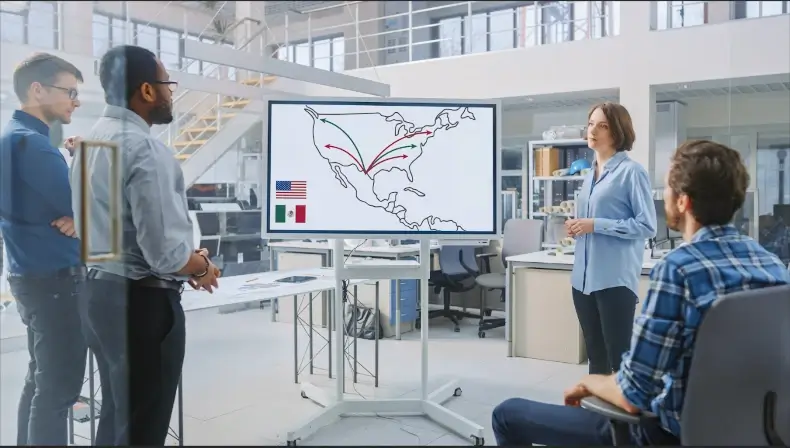
Cross-Border Logistics That Streamline North American Supply Chains

For many supply chains that ship across the border, the problem isn’t moving the freight, it’s managing the complexity of fragmented systems. As more manufacturers bring production to Mexico, the pressure on North American supply chains grow. Speed, visibility, and control are no longer “nice-to-haves”, they’re essential for keeping customers satisfied and revenue secure. For many, the challenge comes at the U.S.–Mexico border, where fragmented logistics create costly delays and uncertainty.
Cross-border logistics doesn’t have to be a guessing game. By simplifying networks, gaining real-time visibility, and consolidating workflows, manufacturers can turn a major pain point into a strategic advantage, building a faster, more reliable, and more customer-focused supply chain while crossing borders.
Why Cross-border logistics between mexico and the U.S. often break down
It starts the same way for many manufacturers: a shipment leaves a plant in Mexico, but somewhere between the border and final delivery, things fall apart. Transit times stretch from days into weeks. Delivery appointments are missed. Customers complain. And back at the office, the team scrambles for updates that never seem to arrive.
The core challenges often experienced are as follows:
- Multiple carriers and agents that don’t coordinate well
- Little to no real-time visibility into shipments
- Missed delivery windows and high claim rates
- Fragmented invoices and volatile pricing
A smarter, more integrated approach
More companies are finding that the answer isn’t adding more partners—it’s reducing complexity. A few strategies consistently help shippers regain control:
- Connect Linehaul with Final Mile: A single, integrated network that handles freight from the border all the way to delivery eliminates unnecessary handoffs and reduces delays.
- Leverage a Controlled Cross-Dock: A standardized border facility consolidates shipments, smooths customs transitions, and improves on-time performance.
- Consolidate Billing: Combining truckload, LTL, and warehousing charges into one clear invoice simplifies accounting and reduces internal labor.
The Impact for Shippers
When manufacturers adopt this kind of model, results often include:
- Transit times reduced to days instead of weeks
- Lower claim rates and fewer inconsistencies
- Stronger customer satisfaction and regained market share
- Less time spent chasing invoices and reconciling charges
- Meaningful reductions in overall freight costs
A more integrated model also opens the door to broader supply chain improvements, including warehousing, distribution, and dedicated fleets. That foundation gives companies the flexibility to grow and adapt as their networks evolve.
You May Like

A. Duie Pyle Named TMSA Trailblazer Award Winner!
2022 was a big year for our expansion across the region! That was highlighted by the opening of three new facilities across the Commonwealth of Virginia. This venture was no small undertaking, as the locations

Cheers! A. Duie Pyle is Now Offering Next-Day Service and Freeze Protection to Alcohol Distributors Throughout the Northeast.
The Northeast U.S. is a bustling region – and not just on the roadways. Densely populated and home to some of biggest & best cities in the world for sports, entertainment and dining, it is